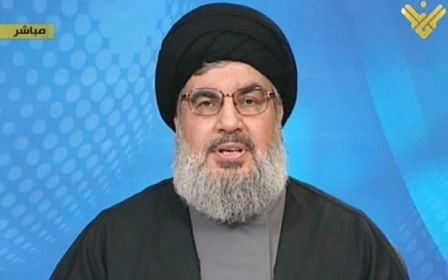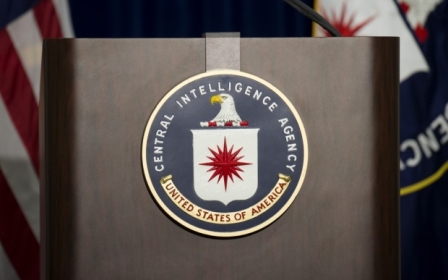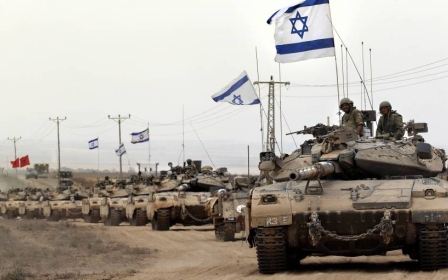Reports reveal joint CIA-Mossad operation to kill Hezbollah leader

A joint CIA-Mossad operation resulted in the assassination of Hezbollah’s international operation’s chief, Imad Mughniyeh, in the Syrian capital in 2008, reports have revealed.
Although the incident had been widely attributed to Israel and the US has never admitted to taking part in the assassination, five former US intelligence officials told the Washington Post that the US was heavily involved in the targeted killing.
A former intelligence official said the US helped build the bomb and test it several times at a North Carolina facility to ensure limited collateral damage.
“We probably blew up 25 bombs to make sure we got it right,” the former official was quoted as saying.
Revelations of the apparent US-Mossad operation come just weeks after the former Hezbollah operations chief's son, Jihad, was killed with five other Hezbollah members and an Iranian Revolutionary Guard general in what is generally thought to be an Israeli attack along the ceasefire line in the Golan Heights. Israel has not officially acknowledged carrying out the 18 January attack.
Tensions between the two sides heightened on Wednesday when Hezbollah fired a rocket at an Israeli military convoy in the Israel-occupied Shebaa Farms, killing two Israeli soldiers. The attack, and a second one an hour later on an Israeli military position in the Mount Hermon foothills, was in apparent retaliation for the 18 January attack. Israel responded with aerial and ground attacks into what Israeli military officials said were Hezbollah operation positions in Lebanon, killing a Spanish UN peacekeeper.
While leaders on both sides threatened to take actions to a new level after the tit-for-tat exchange, the border has been quiet since then.
The timing of the Washington Post's revelations about the US and Mossad operation to kill Imad Mughniyeh, so soon after the tension at the border, raised questions among observers on Saturday.
A quiet February night
On the night of 12 February 2008, while Imad Mughniyeh was at dinner in Damascus, a car bomb was planted in the spare tyre of his SUV. Mossad agents in Tel Aviv triggered the bomb, but the US had the final word to authorise the operation, according to the report.
President George W Bush, the attorney general, the director of national intelligence, the national security adviser and the Office of Legal Counsel at the Justice Department all approved the operation, said the report.
While Mughniyeh was targeted in a country where the US was not at war, the Hezbollah chief had a history of targeting Americans dating back to his role in planning the 1983 bombing of the US Embassy in Beirut, which the US used to sanction the operation after deeming Mughniyah a “continuing threat to Americans".
A former US official told the Post that the Bush administration relied on a theory of national self-defence to kill Mughniyah, claiming he was a lawful target because he was actively plotting against the US and its forces in Iraq, making him a continued and imminent threat who could not be captured.
“The decision was we had to have absolute confirmation that it was self-defence,” the official said.
In its report, the Post provides a litany of terror attacks allegedly connected to Mughniyeh, including the 1983 Beirut barracks bombing that killed 241 US servicemen, the bombing of the US embassy in Beirut that same year, the Israeli embassy bombing in Argentina in 1992, and the 1994 bombing of a Jewish community centre in Buenos Aires.
Post-9/11 self-defence evolution
The technique used to kill Mugniyeh is seen by some legal scholars as a violation of international laws that forbid the use of treacherous means to kill or wound an enemy, said the report.
The two intelligence services also had an opportunity to kill Qassem Soleimani, chief of Iran's elite Quds Force, as he walked with Mughniyeh, the Post revealed - but lacking presidential authorisation, they could not do so legally.
The Mugniyeh operation in Damascus, says the report, highlights an evolution within the US intelligence services that followed the 9/11 attacks.
Before then, the US government often condemned Israel’s assassination operations, including its attempt in 1997 to poison Hamas leader Khaled Meshaal in Jordan, an episode which ended with Mossad agents being captured and the Clinton administration forcing Israel to provide the antidote to save Meshaal’s life.
The CIA declined to comment on the Post's report, while Mark Regev, chief spokesman for the prime minister of Israel, said: “We have nothing to add at this time.”
Stay informed with MEE's newsletters
Sign up to get the latest alerts, insights and analysis, starting with Turkey Unpacked
Middle East Eye delivers independent and unrivalled coverage and analysis of the Middle East, North Africa and beyond. To learn more about republishing this content and the associated fees, please fill out this form. More about MEE can be found here.




